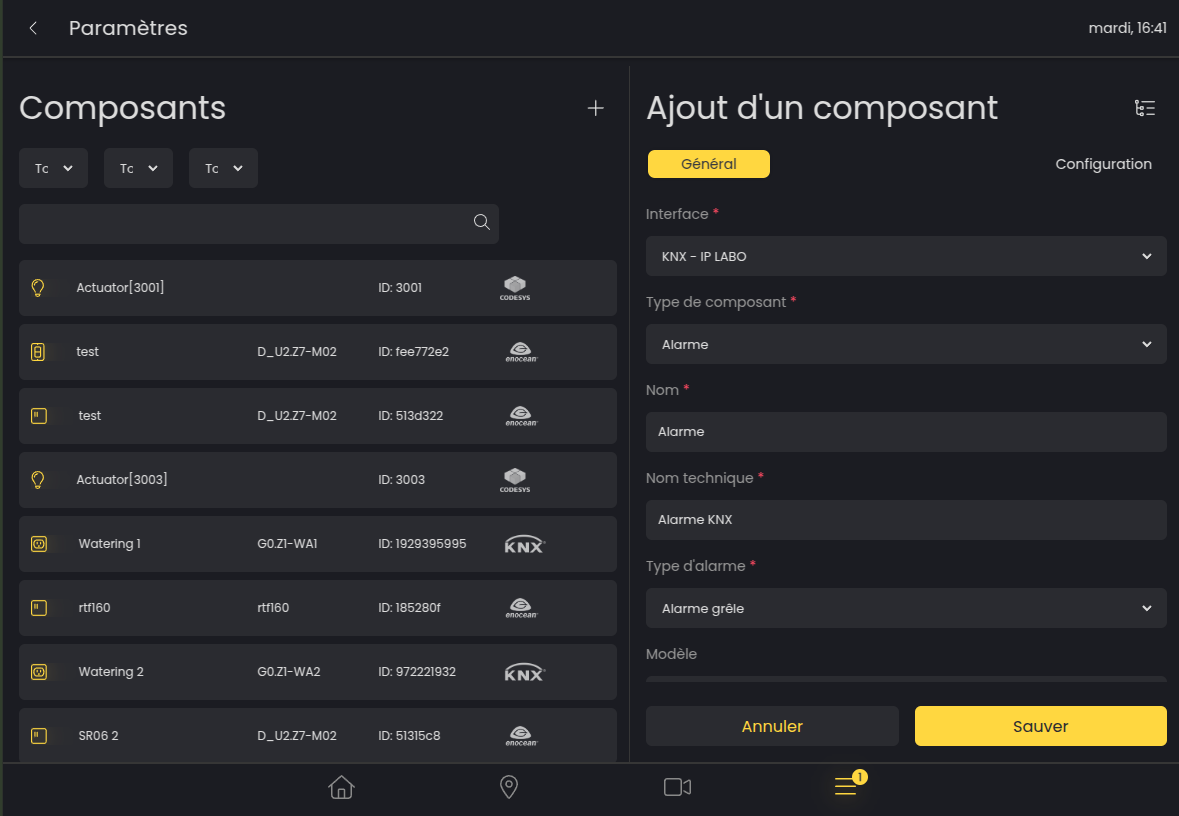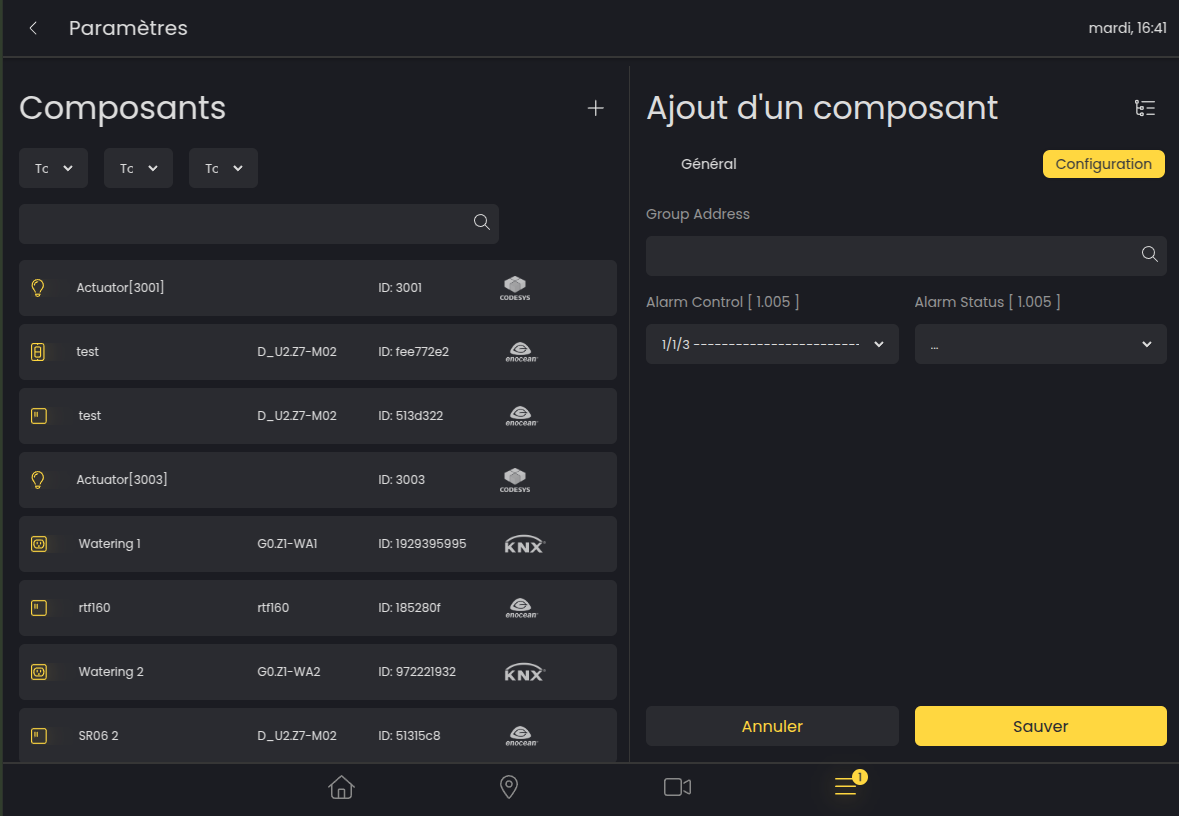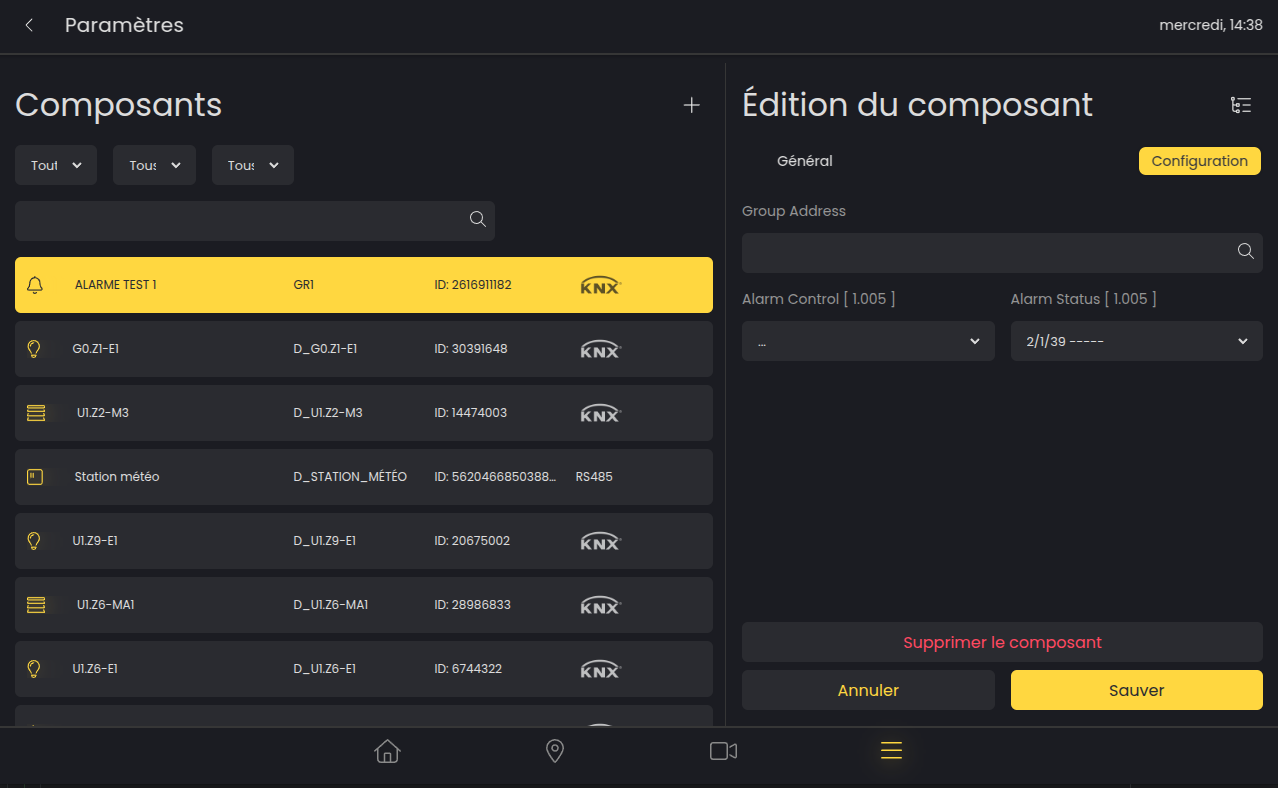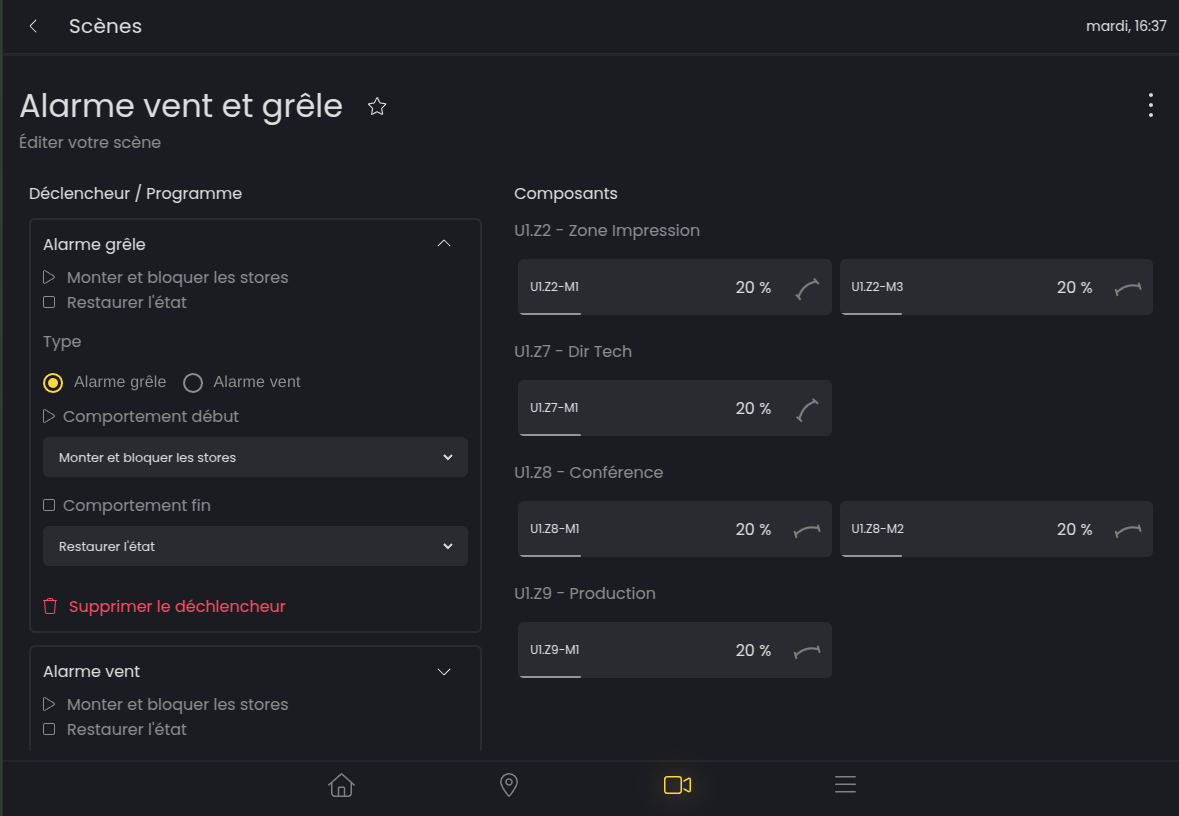Hail and wind alarm
The hail and wind alarm automatically raises your blinds in case of an imminent natural hazard.
The default behavior is always to raise the blinds during an alarm.
VKG/AECA Alarm
The Association of Cantonal Insurance Institutions (AECA) aims to strategically coordinate and represent the interests of the common organizations of insurance institutions, as well as their members.
It offers a hail alarm system by region.
To do this, it is necessary to obtain a dedicated serial number for the building from the protectiongrele.ch website.
Add a VKG/AECA interface
To add the VKG/AECA interface, go to the interface configuration page.
Click on the "+" icon located in the top right corner and select the VKG/AECA protocol and the alarm type "Hail.
Set a name for the interface and insert the serial number provided by VKG/AECA.
Click "Save."
.png?inst-v=d9d82e16-ae62-4f7a-8066-5d6f6fd84ab3)
The connection status is then displayed with useful information such as the alarm status and the latest raised alarms.
.png?inst-v=d9d82e16-ae62-4f7a-8066-5d6f6fd84ab3)
Alarm application
There are two ways to control the blinds in the event of a hail or wind alarm:
Control via KNX bus => Recommended for KNX installations
Control via LAHOCO => Recommended for installations without KNX or to relay the alarm to other protocols
Control via KNX bus
Configuring a KNX interface on LAHOCO is a prerequisite.
The KNX component type "Alarm" allows two actions:
Send (CONTROL) an alarm from LAHOCO to the KNX bus, for example, a VGK/AECA alarm.
Receive (STATUS) an alarm from the KNX bus, for example, using a weather station.
Send an alarm on the KNX bus
To transmit an alarm on the KNX bus, create a KNX component on the dedicated components page.
Configure the component as follows:
Interface: KNX
Component Type: Alarm
Name: Your preference
Technical Name: Your preference
Alarm Type: Hail Alarm or Wind Alarm
Model, Hardware, Software: Free

Then, set the group address Alarm Control 1.005 in the Configuration panel. This address will be activated for the entire duration of the alarm.

To link a VGK/AECA hail alarm to this KNX component:
Create a new scene.
Add the previously created KNX component of type "Alarm" to the scene (only this KNX alarm component should be present in the scene).
Add a trigger to the scene.
Choose the alarm type selected earlier and restore the state.
Receive an alarm from the KNX bus
To receive an alarm from the KNX bus, create a KNX component on the dedicated components page.
Configure the component as follows:
Interface: KNX
Component Type: Alarm
Name: Your preference
Technical Name: Your preference
Alarm Type: Hail Alarm or Wind Alarm
Model, Hardware, Software: Free

Then, set the group address Alarm Status 1.005 in the Configuration panel.

To link a hail or wind alarm to components:
Create a new scene.
Add the desired components to the scene.
Add a trigger to the scene.
Choose the previously selected alarm type and the desired behavior.
Control via LAHOCO
The components are only locked from the LAHOCO interface.
For the VGK/AECA hail or wind alarm to affect your components, you need to:
Create a new scene.
Add the blinds affected by automatic raising (the position of the blinds in the scene has no effect).
Add a trigger to the scene.
Choose Hail Alarm or Wind Alarm.
Choose Raise the blinds or Raise and lock the blinds.
Choose Restore the state or No behavior.
By choosing Restore the state, all the blinds in the scene will return to their state before the alarm was triggered.
